Gautam Dasarathy
Statistically Valid Post-Deployment Monitoring Should Be Standard for AI-Based Digital Health
Jun 06, 2025Abstract:This position paper argues that post-deployment monitoring in clinical AI is underdeveloped and proposes statistically valid and label-efficient testing frameworks as a principled foundation for ensuring reliability and safety in real-world deployment. A recent review found that only 9% of FDA-registered AI-based healthcare tools include a post-deployment surveillance plan. Existing monitoring approaches are often manual, sporadic, and reactive, making them ill-suited for the dynamic environments in which clinical models operate. We contend that post-deployment monitoring should be grounded in label-efficient and statistically valid testing frameworks, offering a principled alternative to current practices. We use the term "statistically valid" to refer to methods that provide explicit guarantees on error rates (e.g., Type I/II error), enable formal inference under pre-defined assumptions, and support reproducibility--features that align with regulatory requirements. Specifically, we propose that the detection of changes in the data and model performance degradation should be framed as distinct statistical hypothesis testing problems. Grounding monitoring in statistical rigor ensures a reproducible and scientifically sound basis for maintaining the reliability of clinical AI systems. Importantly, it also opens new research directions for the technical community--spanning theory, methods, and tools for statistically principled detection, attribution, and mitigation of post-deployment model failures in real-world settings.
Advanced Tutorial: Label-Efficient Two-Sample Tests
Jan 07, 2025
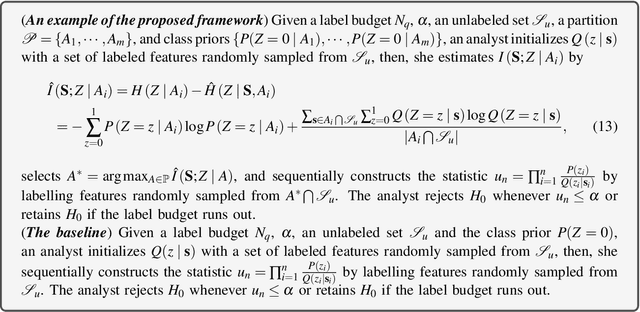
Abstract:Hypothesis testing is a statistical inference approach used to determine whether data supports a specific hypothesis. An important type is the two-sample test, which evaluates whether two sets of data points are from identical distributions. This test is widely used, such as by clinical researchers comparing treatment effectiveness. This tutorial explores two-sample testing in a context where an analyst has many features from two samples, but determining the sample membership (or labels) of these features is costly. In machine learning, a similar scenario is studied in active learning. This tutorial extends active learning concepts to two-sample testing within this \textit{label-costly} setting while maintaining statistical validity and high testing power. Additionally, the tutorial discusses practical applications of these label-efficient two-sample tests.
Structure Learning in Gaussian Graphical Models from Glauber Dynamics
Dec 24, 2024Abstract:Gaussian graphical model selection is an important paradigm with numerous applications, including biological network modeling, financial network modeling, and social network analysis. Traditional approaches assume access to independent and identically distributed (i.i.d) samples, which is often impractical in real-world scenarios. In this paper, we address Gaussian graphical model selection under observations from a more realistic dependent stochastic process known as Glauber dynamics. Glauber dynamics, also called the Gibbs sampler, is a Markov chain that sequentially updates the variables of the underlying model based on the statistics of the remaining model. Such models, aside from frequently being employed to generate samples from complex multivariate distributions, naturally arise in various settings, such as opinion consensus in social networks and clearing/stock-price dynamics in financial networks. In contrast to the extensive body of existing work, we present the first algorithm for Gaussian graphical model selection when data are sampled according to the Glauber dynamics. We provide theoretical guarantees on the computational and statistical complexity of the proposed algorithm's structure learning performance. Additionally, we provide information-theoretic lower bounds on the statistical complexity and show that our algorithm is nearly minimax optimal for a broad class of problems.
Learning Networks from Wide-Sense Stationary Stochastic Processes
Dec 04, 2024Abstract:Complex networked systems driven by latent inputs are common in fields like neuroscience, finance, and engineering. A key inference problem here is to learn edge connectivity from node outputs (potentials). We focus on systems governed by steady-state linear conservation laws: $X_t = {L^{\ast}}Y_{t}$, where $X_t, Y_t \in \mathbb{R}^p$ denote inputs and potentials, respectively, and the sparsity pattern of the $p \times p$ Laplacian $L^{\ast}$ encodes the edge structure. Assuming $X_t$ to be a wide-sense stationary stochastic process with a known spectral density matrix, we learn the support of $L^{\ast}$ from temporally correlated samples of $Y_t$ via an $\ell_1$-regularized Whittle's maximum likelihood estimator (MLE). The regularization is particularly useful for learning large-scale networks in the high-dimensional setting where the network size $p$ significantly exceeds the number of samples $n$. We show that the MLE problem is strictly convex, admitting a unique solution. Under a novel mutual incoherence condition and certain sufficient conditions on $(n, p, d)$, we show that the ML estimate recovers the sparsity pattern of $L^\ast$ with high probability, where $d$ is the maximum degree of the graph underlying $L^{\ast}$. We provide recovery guarantees for $L^\ast$ in element-wise maximum, Frobenius, and operator norms. Finally, we complement our theoretical results with several simulation studies on synthetic and benchmark datasets, including engineered systems (power and water networks), and real-world datasets from neural systems (such as the human brain).
Unraveling overoptimism and publication bias in ML-driven science
May 23, 2024



Abstract:Machine Learning (ML) is increasingly used across many disciplines with impressive reported results across many domain areas. However, recent studies suggest that the published performance of ML models are often overoptimistic and not reflective of true accuracy were these models to be deployed. Validity concerns are underscored by findings of a concerning inverse relationship between sample size and reported accuracy in published ML models across several domains. This is in contrast with the theory of learning curves in ML, where we expect accuracy to improve or stay the same with increasing sample size. This paper investigates the factors contributing to overoptimistic accuracy reports in ML-based science, focusing on data leakage and publication bias. Our study introduces a novel stochastic model for observed accuracy, integrating parametric learning curves and the above biases. We then construct an estimator based on this model that corrects for these biases in observed data. Theoretical and empirical results demonstrate that this framework can estimate the underlying learning curve that gives rise to the observed overoptimistic results, thereby providing more realistic performance assessments of ML performance from a collection of published results. We apply the model to various meta-analyses in the digital health literature, including neuroimaging-based and speech-based classifications of several neurological conditions. Our results indicate prevalent overoptimism across these fields and we estimate the inherent limits of ML-based prediction in each domain.
Active Sequential Two-Sample Testing
Feb 02, 2023
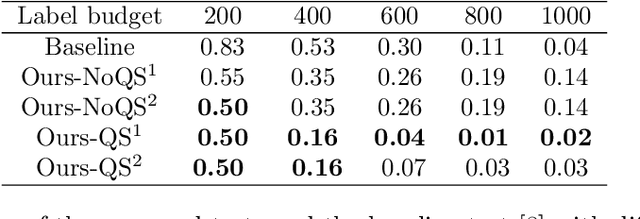


Abstract:Two-sample testing tests whether the distributions generating two samples are identical. We pose the two-sample testing problem in a new scenario where the sample measurements (or sample features) are inexpensive to access, but their group memberships (or labels) are costly. We devise the first \emph{active sequential two-sample testing framework} that not only sequentially but also \emph{actively queries} sample labels to address the problem. Our test statistic is a likelihood ratio where one likelihood is found by maximization over all class priors, and the other is given by a classification model. The classification model is adaptively updated and then used to guide an active query scheme called bimodal query to label sample features in the regions with high dependency between the feature variables and the label variables. The theoretical contributions in the paper include proof that our framework produces an \emph{anytime-valid} $p$-value; and, under reachable conditions and a mild assumption, the framework asymptotically generates a minimum normalized log-likelihood ratio statistic that a passive query scheme can only achieve when the feature variable and the label variable have the highest dependence. Lastly, we provide a \emph{query-switching (QS)} algorithm to decide when to switch from passive query to active query and adapt bimodal query to increase the testing power of our test. Extensive experiments justify our theoretical contributions and the effectiveness of QS.
Robust Model Selection of Non Tree-Structured Gaussian Graphical Models
Nov 10, 2022Abstract:We consider the problem of learning the structure underlying a Gaussian graphical model when the variables (or subsets thereof) are corrupted by independent noise. A recent line of work establishes that even for tree-structured graphical models, only partial structure recovery is possible and goes on to devise algorithms to identify the structure up to an (unavoidable) equivalence class of trees. We extend these results beyond trees and consider the model selection problem under noise for non tree-structured graphs, as tree graphs cannot model several real-world scenarios. Although unidentifiable, we show that, like the tree-structured graphs, the ambiguity is limited to an equivalence class. This limited ambiguity can help provide meaningful clustering information (even with noise), which is helpful in computer and social networks, protein-protein interaction networks, and power networks. Furthermore, we devise an algorithm based on a novel ancestral testing method for recovering the equivalence class. We complement these results with finite sample guarantees for the algorithm in the high-dimensional regime.
Transmission Line Parameter Estimation Under Non-Gaussian Measurement Noise
Aug 28, 2022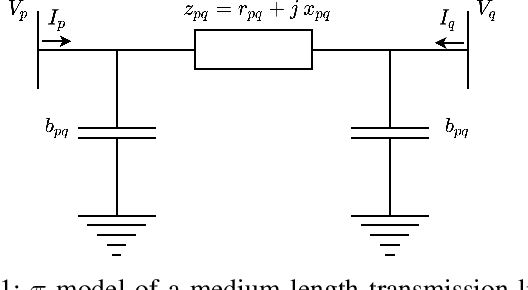
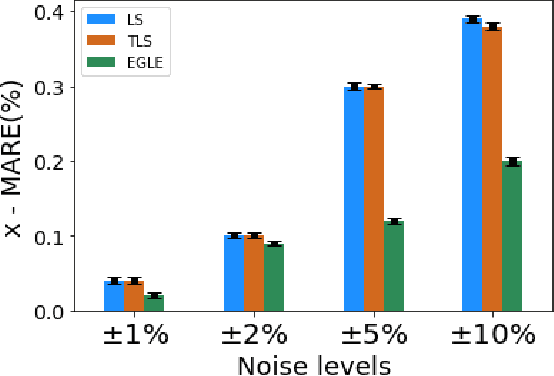
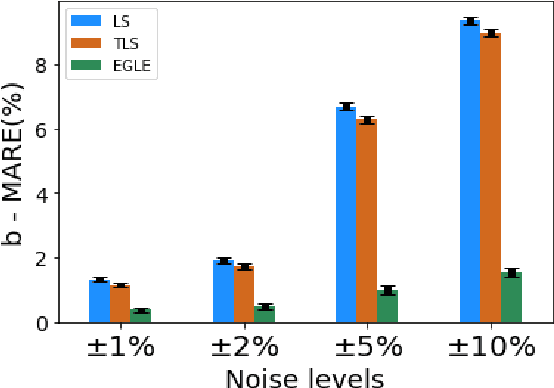
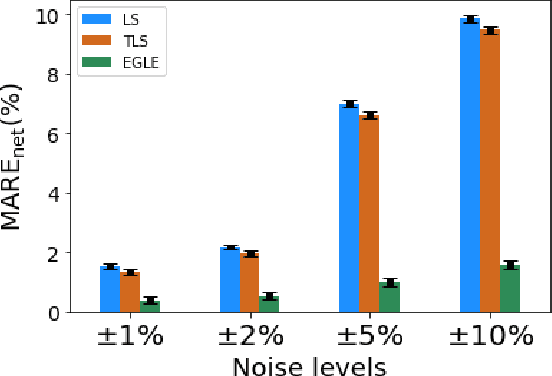
Abstract:Accurate knowledge of transmission line parameters is essential for a variety of power system monitoring, protection, and control applications. The use of phasor measurement unit (PMU) data for transmission line parameter estimation (TLPE) is well-documented. However, existing literature on PMU-based TLPE implicitly assumes the measurement noise to be Gaussian. Recently, it has been shown that the noise in PMU measurements (especially in the current phasors) is better represented by Gaussian mixture models (GMMs), i.e., the noises are non-Gaussian. We present a novel approach for TLPE that can handle non-Gaussian noise in the PMU measurements. The measurement noise is expressed as a GMM, whose components are identified using the expectation-maximization (EM) algorithm. Subsequently, noise and parameter estimation is carried out by solving a maximum likelihood estimation problem iteratively until convergence. The superior performance of the proposed approach over traditional approaches such as least squares and total least squares as well as the more recently proposed minimum total error entropy approach is demonstrated by performing simulations using the IEEE 118-bus system as well as proprietary PMU data obtained from a U.S. power utility.
Controllability of Coarsely Measured Networked Linear Dynamical Systems (Extended Version)
Jun 21, 2022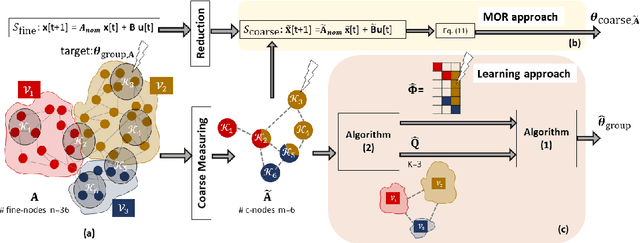
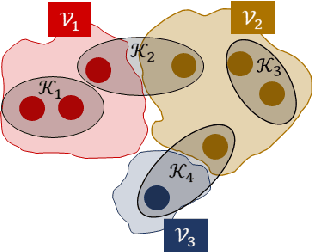
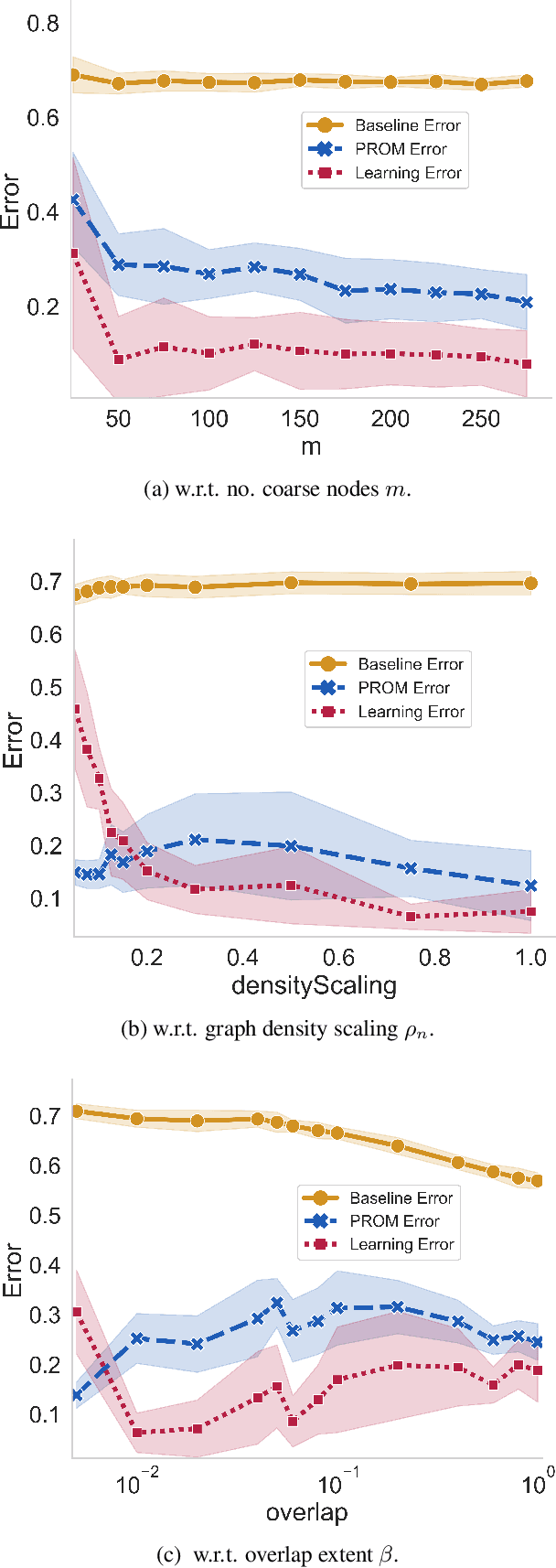
Abstract:We consider the controllability of large-scale linear networked dynamical systems when complete knowledge of network structure is unavailable and knowledge is limited to coarse summaries. We provide conditions under which average controllability of the fine-scale system can be well approximated by average controllability of the (synthesized, reduced-order) coarse-scale system. To this end, we require knowledge of some inherent parametric structure of the fine-scale network that makes this type of approximation possible. Therefore, we assume that the underlying fine-scale network is generated by the stochastic block model (SBM) -- often studied in community detection. We then provide an algorithm that directly estimates the average controllability of the fine-scale system using a coarse summary of SBM. Our analysis indicates the necessity of underlying structure (e.g., in-built communities) to be able to quantify accurately the controllability from coarsely characterized networked dynamics. We also compare our method to that of the reduced-order method and highlight the regimes where both can outperform each other. Finally, we provide simulations to confirm our theoretical results for different scalings of network size and density, and the parameter that captures how much community-structure is retained in the coarse summary.
Learning the Structure of Large Networked Systems Obeying Conservation Laws
Jun 14, 2022


Abstract:Many networked systems such as electric networks, the brain, and social networks of opinion dynamics are known to obey conservation laws. Examples of this phenomenon include the Kirchoff laws in electric networks and opinion consensus in social networks. Conservation laws in networked systems may be modeled as balance equations of the form $X = B^{*} Y$, where the sparsity pattern of $B^{*}$ captures the connectivity of the network, and $Y, X \in \mathbb{R}^p$ are vectors of "potentials" and "injected flows" at the nodes respectively. The node potentials $Y$ cause flows across edges and the flows $X$ injected at the nodes are extraneous to the network dynamics. In several practical systems, the network structure is often unknown and needs to be estimated from data. Towards this, one has access to samples of the node potentials $Y$, but only the statistics of the node injections $X$. Motivated by this important problem, we study the estimation of the sparsity structure of the matrix $B^{*}$ from $n$ samples of $Y$ under the assumption that the node injections $X$ follow a Gaussian distribution with a known covariance $\Sigma_X$. We propose a new $\ell_{1}$-regularized maximum likelihood estimator for this problem in the high-dimensional regime where the size of the network $p$ is larger than sample size $n$. We show that this optimization problem is convex in the objective and admits a unique solution. Under a new mutual incoherence condition, we establish sufficient conditions on the triple $(n,p,d)$ for which exact sparsity recovery of $B^{*}$ is possible with high probability; $d$ is the degree of the graph. We also establish guarantees for the recovery of $B^{*}$ in the element-wise maximum, Frobenius, and operator norms. Finally, we complement these theoretical results with experimental validation of the performance of the proposed estimator on synthetic and real-world data.
 Add to Chrome
Add to Chrome Add to Firefox
Add to Firefox Add to Edge
Add to Edge